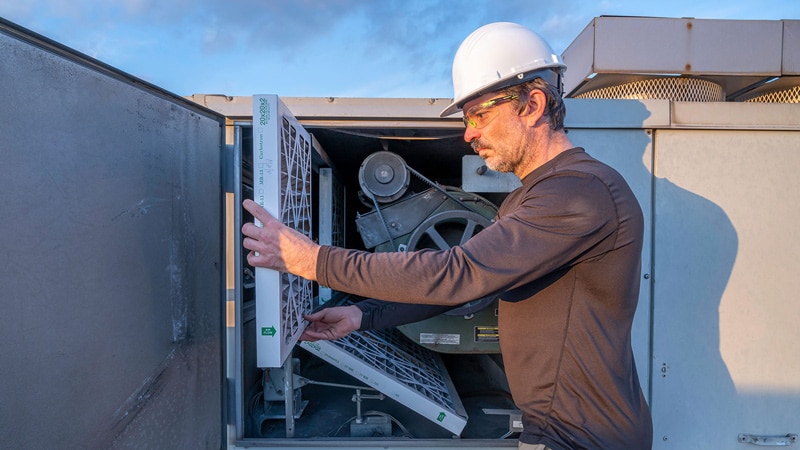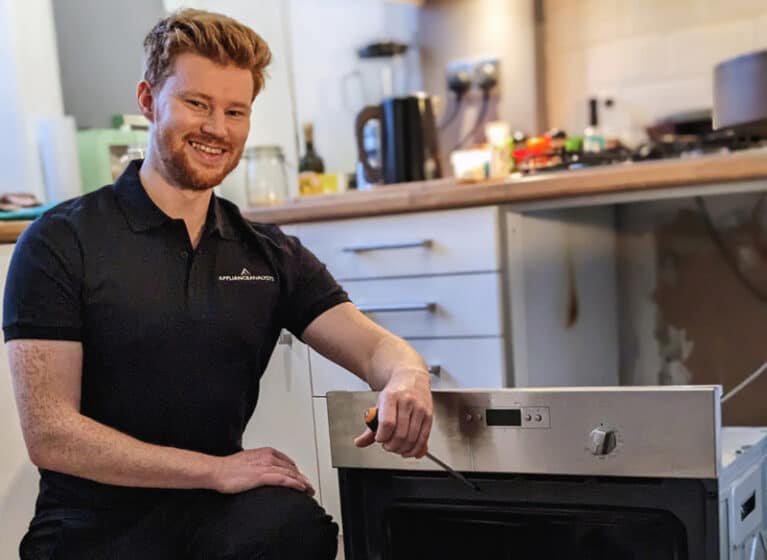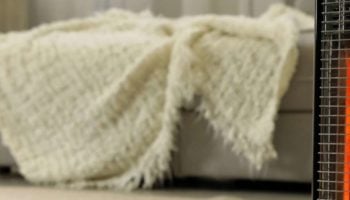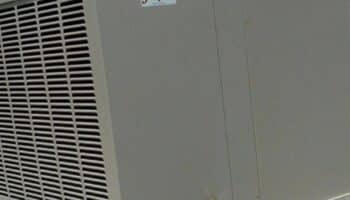We've independently reviewed this article to make sure it's as accurate as we can make it.
To find out more about our article creation and review process, check out our editorial guidelines.
Is your swamp cooler pump not working?
Don’t worry, I’ve been there too. I know how annoying it can be to have this happen, especially during summer.
Luckily, you’ve come to the right place to get this issue fixed.
If your swamp cooler is not pumping water, you need to check the power supply, float switch, water pump, and water distributor tubes. I also recommend inspecting the water pads and water supply.
Ready to learn how to solve this problem? Let’s dive in!
How to Fix a Swamp Cooler That Is Not Pumping Water
A swamp cooler basically works by drawing hot air from the natural environment around it into it with a rotating fan or cage.
Then, the hot air drawn into the unit hits pads soaked in cool water. The hot air evaporates the water. The air, now cooler as a result, is blown from the cooler into the surrounding area.

For a swamp cooler to work, you need hot air and cool water. If you have both, great, you should have a well-functioning swamp cooler.
If, however, you don’t have water pumping, you don’t have saturated pads for that hot air to hit. Which is why you’re here.
Follow these quick steps to fix the issue:
#1 Check the Power Supply
If your evaporative cooler pump is not working, the first thing I recommend doing is checking the power supply, as the pump requires electricity to work.
Start by inspecting the power cord, outlet, and circuit breaker. If you notice any damage, please call an electrician to avoid any safety hazards.
But, if your swamp cooler is on and only blowing hot air, then it’s getting electricity and the air side is functioning. Time to focus solely on the water side.
#2 Check the Water Supply
Swamp coolers usually come in two different types.
One is a unit usually designed for a whole home or multi-rooms. These types of units tend to be hard-wired electrically into the home’s main electrical system. They also either have their water supply hard-piped to them or a dedicated hose for hooking up to them.
If there’s a water supply issue to a swamp cooler like this, it can be because of a damaged supply line or another plumbing issue. The main thing isn’t so much a problem with the swamp cooler as it is getting water to it.
The fix may be as simple as opening a valve that’s shut or, worst case, contacting a plumber for assistance.
The second type of unit usually seen is a portable swamp cooler. These are the type designed for smaller spaces and can be rolled from place to place.
They also normally plug into a typical wall outlet for electricity and can either be hooked up to a hose (if it has a hose option) or hand-filled with water.
A quick visual inspection can tell you right away if the unit has water. A dry reservoir will usually lead to the water pump motor shutting off automatically after a few minutes of zero water. This prevents overheating and equipment damage.
The fix here is to fill the reservoir.
#3 Check the Float Switch
If your swamp cooler has a float switch that tells the pump when water is present or not, check to see if it’s stuck.
Sometimes a stuck float switch may be sending signals that the reservoir is empty even though it isn’t.

This should be an easy inspect and fix if it’s the problem.
#4 Check the Water Pump
If you’re satisfied your swamp cooler is getting the water it’s supposed to, the next thing to check is the water pump.
Similar to the water supply, if the pump is pushing water to the water pads, you’re going to have issues with your cooler’s functionality.
First, check to see if you’ve got an intake screen for your pump. If you do, you very well have a bunch of gunk and debris clogging the screen, preventing sufficient water flow through the pump. Clean it out and move on to the pump itself.
To check your pump to make sure it’s discharging properly, simply disconnect the outlet hose from the pump and look. Instead of water going through the hose to the water distribution tubes for the pads, it should be flowing visibly directly out of the pump.
I also recommend using the amp probe portion of a multimeter to check if the pump is actually moving any water. If the reading is lower than the specifications stamped on the pump, then it might be running, but not moving any water.
If you don’t see water coming out of the pump, you probably have a pump impeller problem. It could be clogged with debris or it could be damaged.
Side note: the impeller is the internal part of the pump that moves the water from the reservoir to the distribution tubes. It’s like a fan or propeller, but since it’s internal to the pump, it’s called an impeller.
Usually, if there’s a pump problem, the easiest thing to do is simply replace it with a new one. It’s not an item you’re going to want to rebuild. Instead, simply replace it following the manufacturer’s recommendations.
If you can’t find your manual, please take a look at our detailed guide on how to find any product’s manual online.
If you’re unsure of how to replace the pump or order replacement parts, you can always contact a service center or technician for help.
#5 Water Distributor Tubes
If the water pump is working properly, it should be pushing water to the distributor tubes and finally to the pads themselves. As a result, this is the next area you’re going to look.
Depending on the quality of your water, it’s not unrealistic to get different types of build-up. This is true for any water system, ranging from mineral to mildew to possibly a combination of both.
Although cleaning and changing your pads may be a routine thing, cleaning the distributor tubing may not.
So, detach your tubs and clean them one at a time. You can do this with a combination of water and vinegar or good old soapy water. Also, to really clear out the tubes, pipe cleaners are perfect for getting deeper into them and loosening any gunk that doesn’t flush out right away.
After that, flush them one last time and put them back to work.
When you’re cleaning these tubes, it’s not uncommon to find one or two that are damaged or deteriorated. This can be due to any number of reasons, ranging from age to usage to environmental factors.
If you’ve got damaged or deteriorated lines, they’ll definitely impact your water distribution to the pads and thus your cooler’s ability to evaporate any water that’s actually making it to the pads.
The fixes here are to inspect, clean, and replace any tubing as necessary. Even if your pump is working, if there are any issues with the tubes, it’s going to seem like water isn’t pumping.
#6 Water Pads
The last items to check are the pads themselves. Ideally, you’re changing the pads twice per cooling season at a minimum. If you’re running it non-stop, you might be changing them as often as once a month.
However, if you haven’t been getting water to them, you might as well inspect them while you’re checking everything else.
The reason being is if you did have a little water reaching the pads, it probably wasn’t enough to notice or cool the air, but it may have been enough to leave some residue of its own.
This won’t harm the pads but, again, if you’re cleaning everything else up, it doesn’t hurt to at least make sure the material condition of the pads is good to go, too. The last thing you want to do is button everything up and realize you should have replaced the pads while you were at it.
Then again, if the pads are coated in salt or feel like they’re petrified, they probably should have been changed long before you had any other water issues.
Conclusion
A swamp cooler that’s not pumping water is clearly a swamp cooler that isn’t functioning correctly. In other words, it’s probably blowing hot air and not doing a bit of cooling, doing you zero good.
To resolve this issue means finding the reason water isn’t flowing to and through your swamp cooler like it’s supposed to. Thankfully, there are six things to check and fixes you can make if you discover any problems.
But, as always, if you can’t find the issue or if the issue seems out of your ability to repair, don’t fear calling a technician or service center, especially when your quality of life is suffering.
Thank you so much for reading! If you found this article helpful, please be sure to check out our related posts below.
Good luck.







